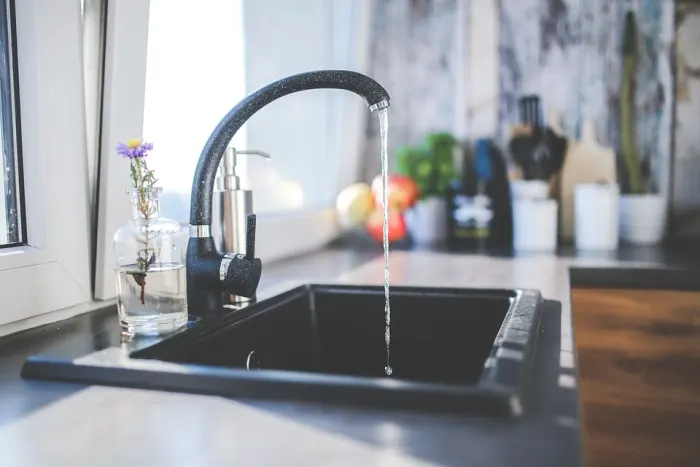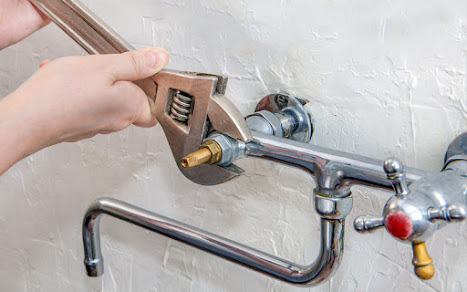Listed here below you can locate a lot of good information on the subject of Why Do My Plumbing Pipes Make A Knocking Noise.

To detect loud plumbing, it is important to establish very first whether the undesirable audios happen on the system's inlet side-in various other words, when water is turned on-or on the drainpipe side. Sounds on the inlet side have varied causes: extreme water pressure, worn valve and faucet parts, incorrectly attached pumps or various other devices, improperly put pipeline fasteners, as well as plumbing runs containing way too many limited bends or other restrictions. Sounds on the drainpipe side generally originate from bad location or, as with some inlet side noise, a design containing limited bends.
Hissing
Hissing noise that takes place when a tap is opened a little normally signals too much water stress. Consult your regional public utility if you presume this trouble; it will be able to inform you the water pressure in your location and can set up a pressurereducing valve on the inbound water system pipeline if essential.
Various Other Inlet Side Noises
Squeaking, squealing, scratching, snapping, and tapping usually are brought on by the development or contraction of pipes, generally copper ones providing hot water. The audios take place as the pipelines slide against loosened bolts or strike neighboring home framework. You can usually pinpoint the place of the issue if the pipelines are revealed; just adhere to the sound when the pipes are making noise. Probably you will uncover a loosened pipe hanger or a location where pipes lie so near floor joists or various other mounting items that they clatter against them. Attaching foam pipe insulation around the pipes at the point of call must correct the problem. Make certain bands and also wall mounts are secure and give adequate assistance. Where feasible, pipeline fasteners must be connected to enormous structural components such as foundation wall surfaces instead of to framing; doing so lessens the transmission of resonances from plumbing to surfaces that can amplify and also move them. If connecting bolts to framework is inescapable, cover pipes with insulation or various other resilient product where they speak to bolts, as well as sandwich completions of brand-new bolts in between rubber washers when mounting them.
Dealing with plumbing runs that deal with flow-restricting tight or various bends is a last option that needs to be embarked on just after consulting a skilled plumbing contractor. However, this scenario is fairly usual in older residences that might not have been built with interior plumbing or that have seen a number of remodels, particularly by amateurs.
Babbling or Screeching
Extreme chattering or screeching that takes place when a valve or tap is activated, which usually disappears when the fitting is opened completely, signals loose or faulty internal components. The solution is to change the shutoff or tap with a new one.
Pumps and home appliances such as washing machines as well as dish washers can transfer motor noise to pipelines if they are poorly linked. Link such products to plumbing with plastic or rubber hoses-never stiff pipe-to isolate them.
Drain Noise
On the drain side of plumbing, the chief objectives are to get rid of surface areas that can be struck by falling or hurrying water and to shield pipes to consist of inescapable audios.
In new construction, bath tubs, shower stalls, commodes, and wallmounted sinks as well as basins must be set on or versus resistant underlayments to lower the transmission of noise via them. Water-saving toilets as well as faucets are less loud than standard designs; mount them instead of older kinds even if codes in your area still permit making use of older fixtures.
Drains that do not run vertically to the cellar or that branch into horizontal pipe runs sustained at floor joists or other framing present particularly problematic noise troubles. Such pipes are large sufficient to radiate significant resonance; they also lug considerable quantities of water, which makes the circumstance worse. In new construction, specify cast-iron soil pipelines (the big pipes that drain pipes commodes) if you can afford them. Their massiveness consists of much of the sound made by water going through them. Likewise, avoid transmitting drainpipes in walls shown to rooms and spaces where people collect. Wall surfaces containing drainpipes ought to be soundproofed as was explained previously, using double panels of sound-insulating fiberboard and also wallboard. Pipes themselves can be wrapped with unique fiberglass insulation created the function; such pipelines have a resistant plastic skin (in some cases including lead). Outcomes are not always sufficient.
Thudding
Thudding noise, often accompanied by trembling pipelines, when a faucet or device valve is shut off is a problem called water hammer. The noise as well as vibration are triggered by the reverberating wave of pressure in the water, which all of a sudden has no location to go. Occasionally opening a shutoff that releases water rapidly right into a section of piping having a constraint, elbow, or tee fitting can create the exact same problem.
Water hammer can usually be healed by installing fittings called air chambers or shock absorbers in the plumbing to which the problem shutoffs or taps are attached. These gadgets permit the shock wave developed by the halted circulation of water to dissipate in the air they include, which (unlike water) is compressible.
Older plumbing systems might have short upright areas of capped pipe behind wall surfaces on faucet competes the exact same objective; these can at some point full of water, lowering or damaging their effectiveness. The treatment is to drain pipes the water supply entirely by shutting off the major water supply shutoff as well as opening all taps. After that open the major supply shutoff and also shut the taps individually, beginning with the faucet nearest the shutoff and also ending with the one farthest away.
If Your Plumbing is Making These Sounds, There’s a Problem
A Bang or Thump When You Turn Off a Faucet
If a loud bang or thump greets you each time your turn off running water, you likely have a water hammer. A water hammer occurs when the water velocity is brought to a halt, sending a shock wave through the pipe. It can be pretty jarring — even worse, damaging to your plumbing system. All that thudding could loosen connections.
Strange Toilet Noises
You’re so familiar with the sounds your toilet makes that your ears will be attuned to anything out of the ordinary. Fortunately, most unusual toilet noises can be narrowed down to just one of several problems.
Foghorn sound:
- Open the toilet tank
- Flush the toilet
- When you hear the foghorn noise, lift the float to the top of the tank
If you’re ambitious, you can remove the ballcock valve and disassemble it to replace the washer. Or you can more easily replace the ballcock valve entirely. This device is relatively inexpensive and available at most any hardware store.
Persistent hissing:
The hissing following a flush is the sound of the tank filling. It should stop once the tank is full. But if the hissing continues, it’s likely because water is leaking out of the tank. The rubber flap at the bottom of the tank can degrade, letting water slip through and into the bowl. That’s why the tank is refilling continuously. Fortunately, this is an easy fix:
- Cut the water to the toilet by closing the shutoff valve on the water supply line.
- Flush the toilet to drain the tank.
- Disconnect the flapper
- Attach the new flapper
Gurgling or bubbling:
Gurgling or bubbling suggests negative air pressure in the drain line, likely resulting from a clog. As air releases, it causes the water in the toilet to bubble. This could either be a minor issue or a major one, depending on the clog’s severity. Clogs can be caused by toilet paper or more stubborn obstructions such as tree roots. If you can’t work out the clog with a plunger, contact a professional plumber for assistance because a clog of this magnitude could lead to filthy and unsanitary sewage backups in your sink bathtub.

As a passionate reader on Why Do My Plumbing Pipes Make A Knocking Noise, I was thinking sharing that excerpt was essential. Sharing is caring. You just don't know, you might be doing someone a favor. Thank you so much for taking the time to read it.
Drain woes? Connect.
Comments on “Eliminating Noisy Plumbing Easily”